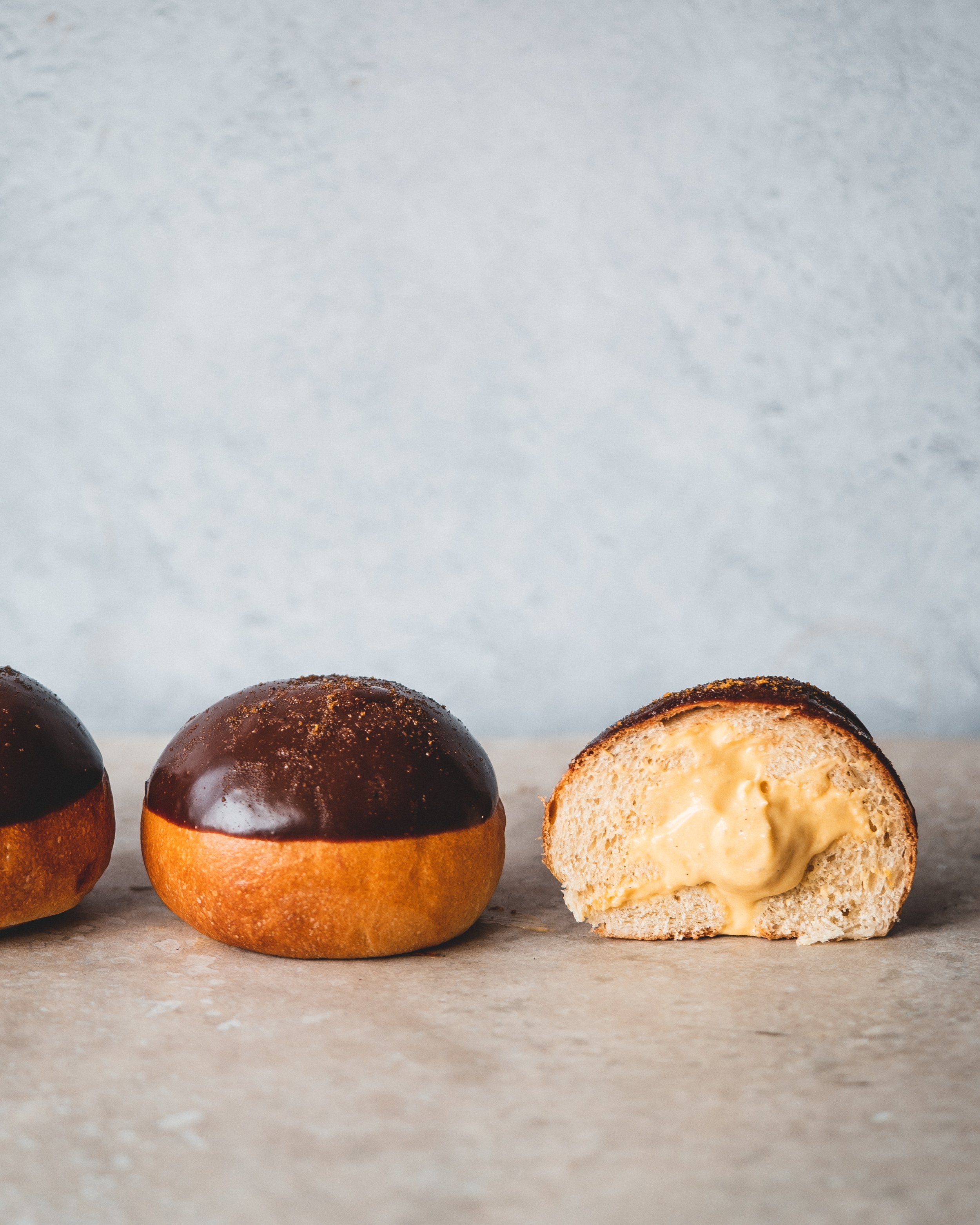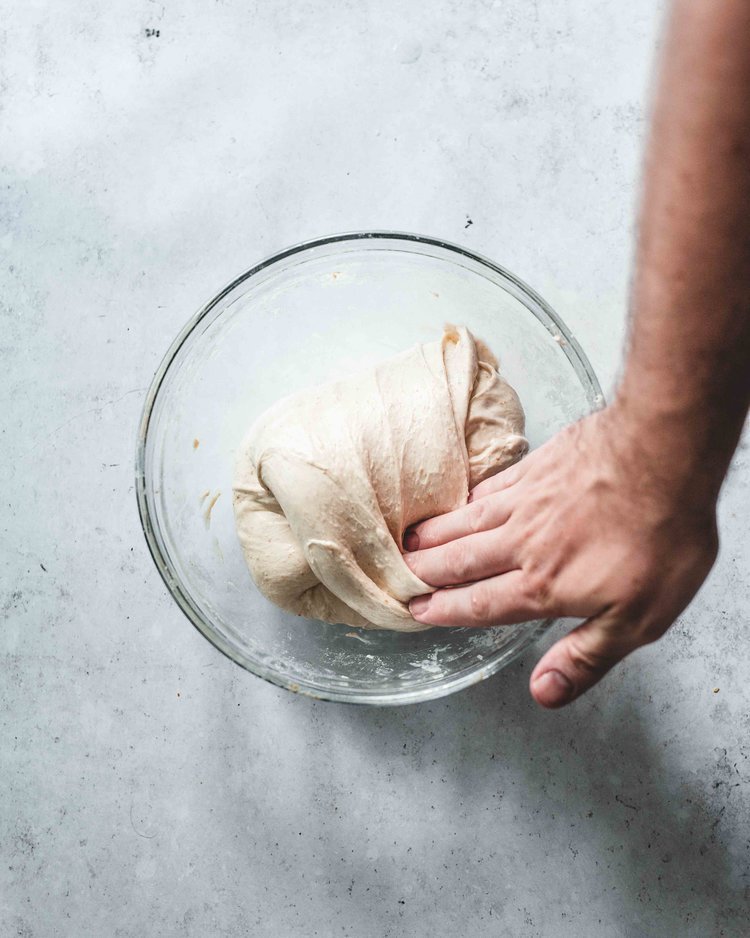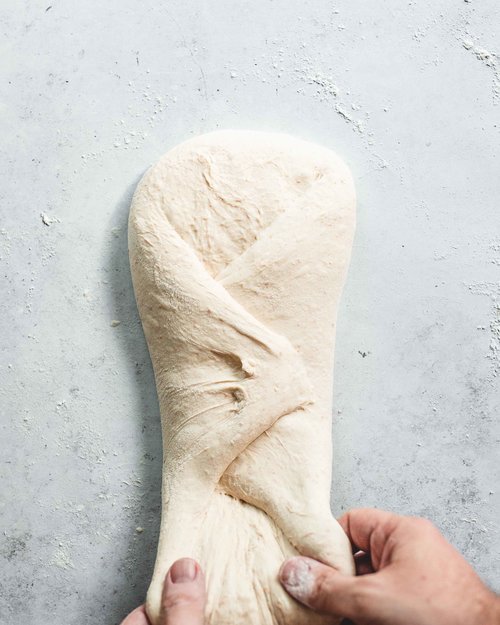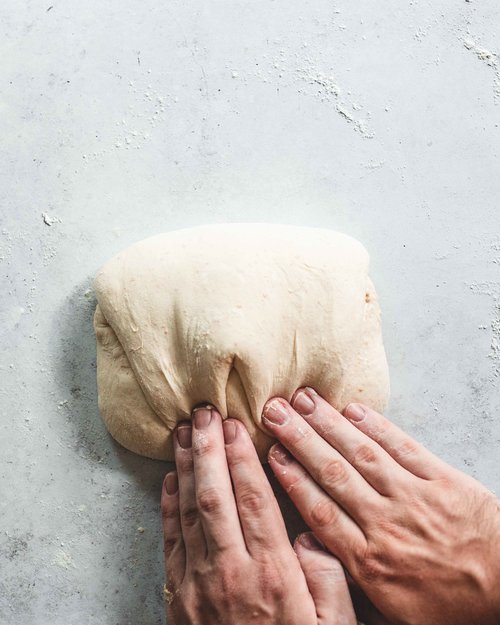Is there a flavour pairing you go back to time and time again, something you just cant get enough of? Chocolate and mint, matcha and white chocolate or maybe pear and ginger? For me the pairing is the joyous matching of chocolate and passion fruit (works brilliantly with both milk and dark chocolate but milk is what I normally go for). I first tried this pairing in a macaron at famed pastry chef, Pierre Herme’s, Parisian boutique. It just works, the brightness of the passion fruit and the rich creaminess of the milk chocolate, I will never bore of it.
For these brioche buns I drew inspiration from the flavour combo and a form from Aroma Bakery in London, who make a brioche filled with cream and dipped in chocolate. These buns are flavoured with a little lemon zest filled with a passion fruit pastry cream lightened with a little whipped cream. The finished buns are dipped in a thin milk chocolate ganache that has been spiked with a little extra passion fruit puree.
Before we get to the recipe a quick note on passion fruit. They are expensive, at least here in the UK, especially considering how many you often need to get the need amount of puree for a recipe. So whilst I generally like using fresh fruit in recipes that use a lot of passion fruit I splurge on passion fruit puree, which is sold in cartons. Yes you have to buy these online (or a good alcohol shop if you have one close by, this is where I get it in London) and they only come in litre sized packs, it does however work out significantly cheaper than buying the fresh fruit. If you love using passion fruit in baking this is my preferred method, for ease and for value. It is also worth noting you can also freeze the puree you don’t use and save it for a later purpose.
Chocolate Passion Fruit Brioche Bun
Makes 8
Brioche
250g strong white bread flour
1/2 tsp fine sea salt
1 tsp fast action dried yeast
20g caster sugar
Zest of 1 lemon
125ml whole milk
1 large egg, plus one for egg wash
50g unsalted butter, room temperature
Passion Fruit Pastry Cream
225ml passion fruit puree
75g caster sugar
20g cornflour
3 large egg yolks
Pinch of fine sea salt
20g unsalted butter
100ml double cream
1 tsp vanilla bean paste
Chocolate Glaze
50g milk chocolate (I like a dark milk chocolate, something around 50% cocoa solids)
50ml double cream
15ml passion fruit puree
The day before you want to bake these buns make the brioche and the pastry cream. For the brioche place 20g of the flour and 80ml of the milk into a small butter pan and cook over medium heat, stirring with a small whisk or spatula, until the mixture cooks into a thick paste. Scrape into a small bowl and set aside for the moment.
In the bowl of a stand mixer add the remaining flour, salt and yeast and whisk to combine. Add the sugar and lemon zest to a small bowl and use your fingers to rub together until the sugar resembles moist sand and you can smell the aroma from the lemon. Add this to the bowl along with the remaining milk and egg, and the cooked flour mixture. With the dough hook attached mix on low speed until the mixture forms a shaggy dough. Continue mixing for 10-15 minutes or until the dough no longer sticks to the sides of the bowl. Add the butter a little bit at time until all of it has been added. Continue mixing on low speed until the butter has been combined and the dough is once again no longer sticking to the sides of the bowl and has formed a ball of dough around the dough hook. The finished dough should have a slight sheen and be stretchy and elastic. Scrape the dough onto the worksurface and form into a ball. Place into a bowl and cover with clingfilm and refrigerate overnight until ready to use (the dough can be stored in the fridge for a couple days before using).
To make the pastry cream place the passion fruit puree into a saucepan with half of the sugar. Place the pan over medium heat and bring to a simmer. Meanwhile, in another bowl, mix together the remaining sugar and cornflour. Add the egg yolks and salt and whisk together until smooth. When the puree is simmering pour over the yolk mixture, whisking as you pour to prevent the yolks from scrambling. Pour the custard back into saucepan and place back over medium/high heat and cook, whisking constantly, until the custard comes to a boil and is thick. Immediately scrape the custard into the bowl, add the butter and stir until fully combined. Press a sheet of clingfilm onto the surface of the custard and refrigerate until needed. The custard can be stored in the fridge for 2-3 days before using.
On the day you want to bake the buns remove the dough from the fridge and divide into 8 equal sized pieces. Form the dough into neat round buns and place them on a large parchment lined baking tray. Cover the buns lightly with clingfilm and set aside for about 60-90 minutes or until the buns have almost doubled in size. Just before they have finished proofing preheat the oven to 200ºC (180ºC Fan). Lightly beat the remaining egg with a fork and brush each bun with the egg wash. Bake in the preheated oven for about 15-20 minutes or until the buns are golden. Remove and set aside to cool.
For the pastry cream remove the bowl from the fridge and beat the custard until smooth and lump free. In a separate bowl beat the cream and vanilla until it holds soft peaks. Add the cream to the custard and fold together until smooth and fully combined.
Using a skewer, poke a hole in the bottom of each bun. Scrape the custard into a piping bag fitted with a Bismarck piping tip (you can use whatever thin round piping tip you have but anything doughnut-like is much easier with a bismarck tip). Pipe in as much custard as each bun will take before it squeezes out. Once filled the buns should feel a little heavy, if they feel light they need more custard.
For the glaze melt together the cream and chocolate until fully melted and a smooth ganache is formed. Scrape the ganache into a small bowl and whisk in the passion fruit puree. Dip the buns into the ganache, allowing any excess to dip back into the bowl. Place back onto the baking tray and set aside until the ganache is set. If you want to can decorate the buns, either with a little grated chocolate like Arome do with their buns, a little cocoa powder or a little freeze dried passion fruit powder as I did.
Kept covered these buns will keep for 2-3 days.





















